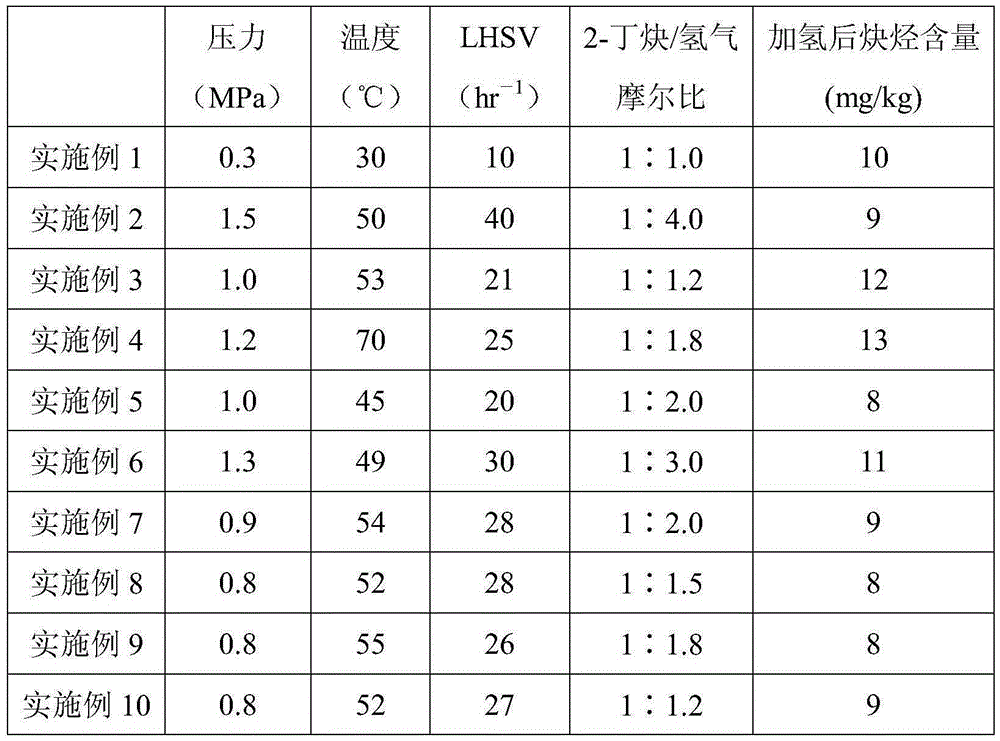Method for removing 2-butyne by conducting selective hydrogenation on C5 fractions
A C5 fraction, selective technology, used in hydrocarbons, chemical instruments and methods, hydrocarbon purification/separation, etc., can solve the problem of reducing isoprene yield, increasing energy consumption, and improving operational severity problems, to achieve the effect of preventing polymerization side reactions, reducing energy consumption, and reducing the severity of operations
- Summary
- Abstract
- Description
- Claims
- Application Information
AI Technical Summary
Problems solved by technology
Method used
Image
Examples
Embodiment 1~10
[0023] 1. Raw material of C5 distillate
[0024] The C5 fractions used in Examples 1 to 10 come from a part of the material produced by the C5 separation device when producing isoprene. The components of the C5 fraction are shown in Table 1.
[0025] Table 1.
[0026] components C5 fraction Total C4,% 0.00 3-Methylbutene-1,% 0.01 1.4-Pentadiene,% 0.07
[0027] 2-Butyne,% 1.17 Prenyne,% 0.00 2-Methylbutene-1,% 0.02 Isoprene,% 98.23 2-Methylbutene-2,% 0.00 Cyclopentadiene,% 0.00 Cyclopentene,% 0.00 Other C5,% 0.00 Dimethylamine,% 0.5 pH 11
[0028] 2. Dimethylamine removal of C5 fraction
[0029] The size of the water washing tower for removing dimethylamine from the carbon five fraction is It is carried out in a stainless steel tube, and 100 grams of spherical sulfonic acid-based cation exchange resin catalysts with a particle size of 0.40-1.25 mm are loaded into the tube ...
PUM
 Login to View More
Login to View More Abstract
Description
Claims
Application Information
 Login to View More
Login to View More - Generate Ideas
- Intellectual Property
- Life Sciences
- Materials
- Tech Scout
- Unparalleled Data Quality
- Higher Quality Content
- 60% Fewer Hallucinations
Browse by: Latest US Patents, China's latest patents, Technical Efficacy Thesaurus, Application Domain, Technology Topic, Popular Technical Reports.
© 2025 PatSnap. All rights reserved.Legal|Privacy policy|Modern Slavery Act Transparency Statement|Sitemap|About US| Contact US: help@patsnap.com



